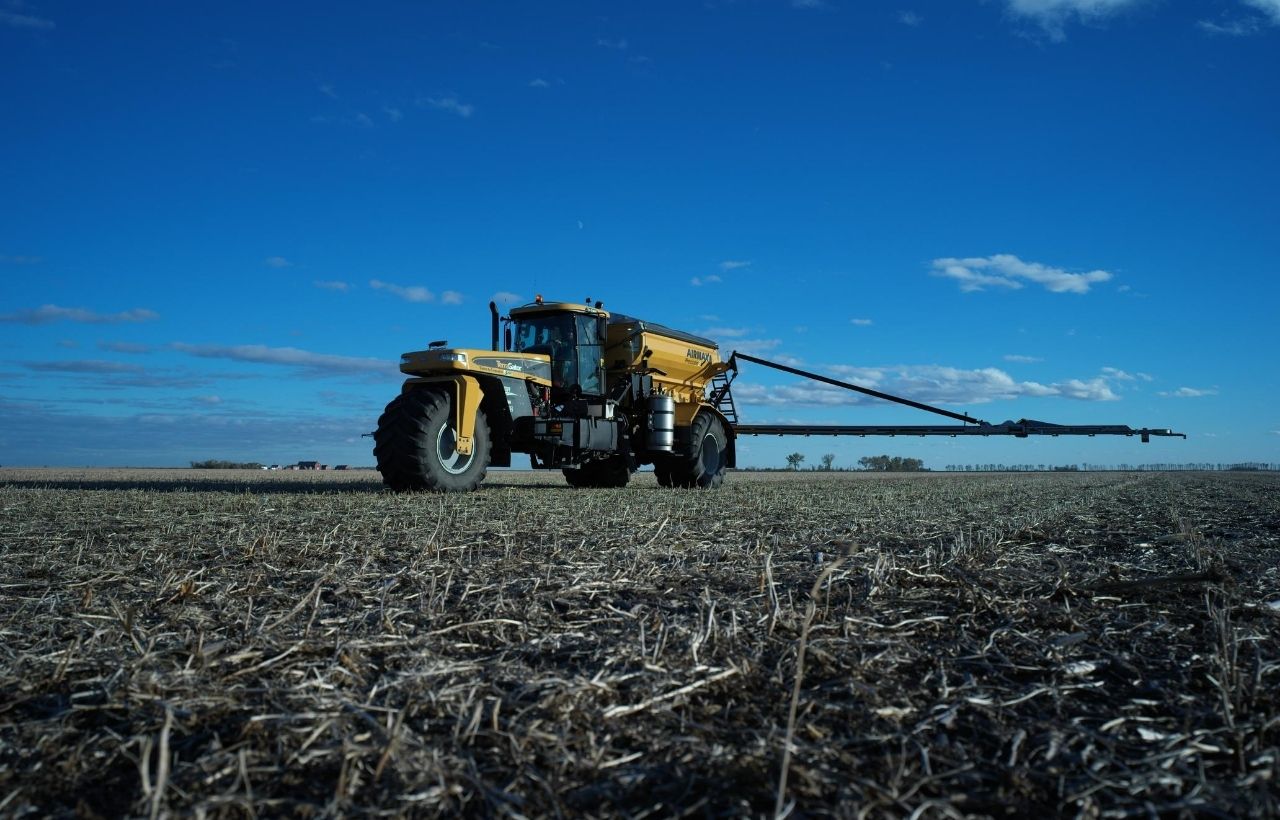
LISTEN NOW: Fall fertilizer recommendations (Audio)
Each harvest comes with a degree of soil nutrient removal, depending on the crop and yield. When record yields are harvested, a large amount of nutrients are removed from the soil as well. Because soil fertility is a foundational building block for producing higher yields, nutrients must be replenished each year. Once growers wrap up harvest season, quick decisions need to be made on a fall fertilizer plan. A fall fertilizer application can help maintain nutrients in the soil after harvest and prepare fields for a prosperous next growing season.
Fall vs. spring applications
Weather, product availability, equipment resources and soil conditions must all be considered when making an application timing decision. Fall typically has a greater number of suitable days for fieldwork than spring. Allocating some of the nutrient applications to the fall helps ease the workload in the spring, when fewer suitable days may be available due to unpredictable weather. Consider prioritizing acres that didn’t get fertilizer applied during the spring or previous fall with an application this fall.
With the 4Rs of Nutrient Stewardship (Right source, Right rate, Right time, and Right place), timing is a critical consideration. It’s important to apply nutrients when the risk of runoff and leaching is low. Research shows that when phosphorus (P) fertilizer is left on the soil surface, any rainfall-induced runoff within the next several weeks will contain much-elevated levels of soluble P. Pay close attention to late-fall and early-spring applications when soil may still be frozen.
Applications of phosphorus, potassium (K), zinc (Zn) and elemental sulfur (S⁰) are well suited for the fall. Elemental sulfur often requires months to convert to sulfate sulfur (SO₄²⁻). P, K and Zn form chemical bonds with minerals in the soil. As a result, their movement becomes limited to just a few inches. Broadcast applications with tillage or banding below the soil surface can help avoid potential surface runoff during intense or longer-duration rainfall that could take place in the days following application.
However, take comfort in knowing that spring fertilizer applications can also be a good back-up option if a fall application isn’t feasible this year due to time or weather constraints.
LISTEN NOW: Soil sampling and interpreting results (Audio)
Utilize soil sampling to inform fertilizer decisions
With up to 60% of yield dependent on soil fertility, understanding what nutrients are available in the soil can help guide a crop nutrition plan. Soil sampling is one of the best tools for fertility planning and is key to understanding the amount of fertilizer needed to reach yield goals. By balancing what is applied and what is needed by a specific crop, there is a greater chance for minimizing nutrient losses and optimizing efficiency of water use as well as other nutrients.
Soil samples should be pulled immediately following harvest to inform a fall fertilizer application. The goal is to allow enough time for soil test interpretation, decision-making and fertilizer application prior to planting. In high-yield systems, samples should be collected every two years and at the same time of year as the last sampling, as soil test values can vary during different months.
Compile soil data to determine nutrient availability
If soil sampling has been conducted within the past two to four years, use those results plus any tissue test results to monitor nutrient deficiencies and nutrient availability across the field.
While it is common to focus on the primary nutrients — nitrogen, phosphorus and potassium — consider looking at micronutrients and secondary nutrients like sulfur within the soil to understand different crops’ nutrient needs to take yields to the next level.
If recent soil tests aren’t available, evaluate other obtainable data to get a baseline idea of a crop’s nutrient removal rates. Scale tickets, yield maps and scouting for deficiencies throughout the season can help guide a fall fertilizer plan.
Consult with a retailer
For the most flexibility in the spring, consider making a fertilizer investment and application this fall. Start conversations with retailers now to have a plan in place when harvest is complete. Local crop advisors, such as a fertilizer dealer, independent crop consultant, county agent or other supplier advisors, can provide invaluable advice when making fertilizer decisions.
Select the right fertilizer source
Depending on nutrient needs, consider a fertilizer product with a blend of season-long available nutrients and flexible application timing. MicroEssentials®, Aspire® and K-Mag® deliver essential nutrients that crops need.
In addition to P, MicroEssentials supplies the plant with both sulfate sulfur and elemental sulfur, which creates an available sulfur supply from planting to maturity. Other elemental sulfur products may have a larger particle size or higher total ES concentration that greatly reduces the oxidation rate over to plant-available sulfate sulfur. With MicroEssentials’ Fusion® technology, its small ES particle size and balanced nutrient ratio allow for timely oxidation throughout the growing season.
Similar to the sulfur in MicroEssentials, Aspire is a potassium (K) based product that contains two forms of boron (B) for both early- and late-season growth and development. K-Mag is nature’s trifecta; offering K, magnesium (Mg), and S in every granule and providing a low-chloride option to deliver three critical macronutrients for peak yield.
To learn more about performance fertilizer products from The Mosaic Company to apply this fall, visit cropnutristg.wpengine.com/products.